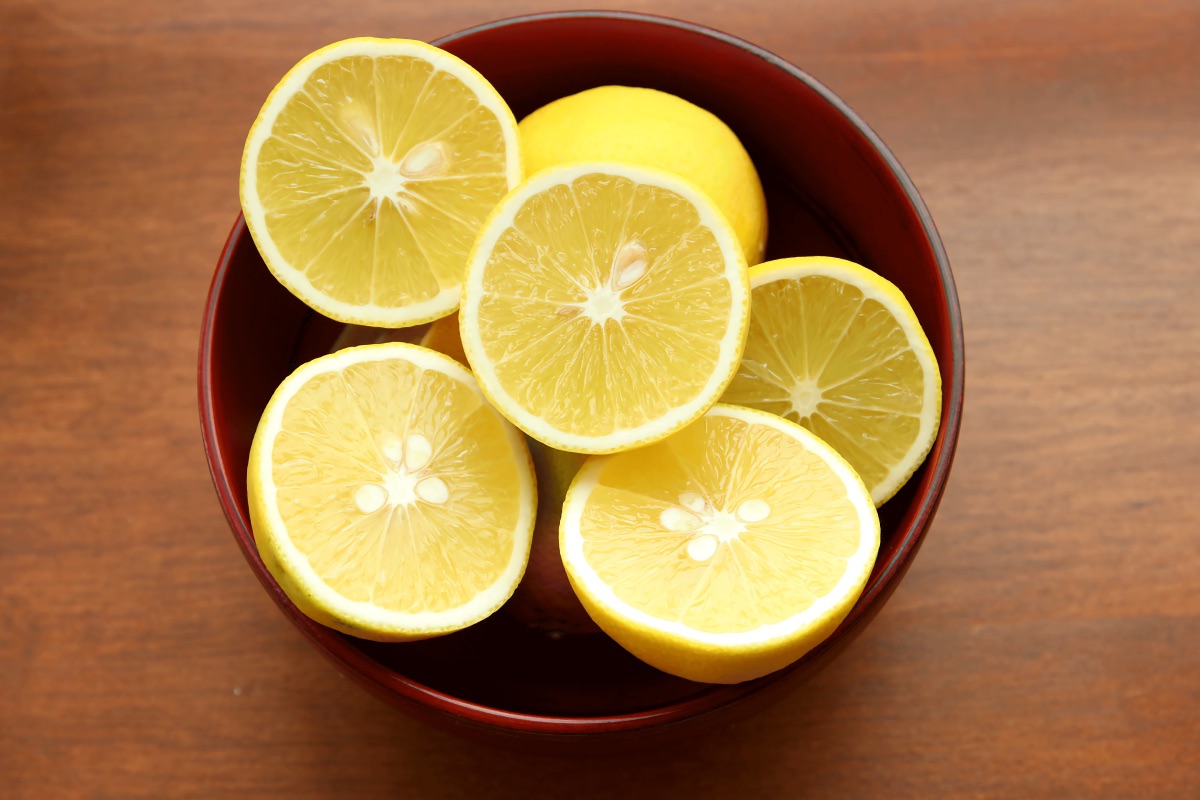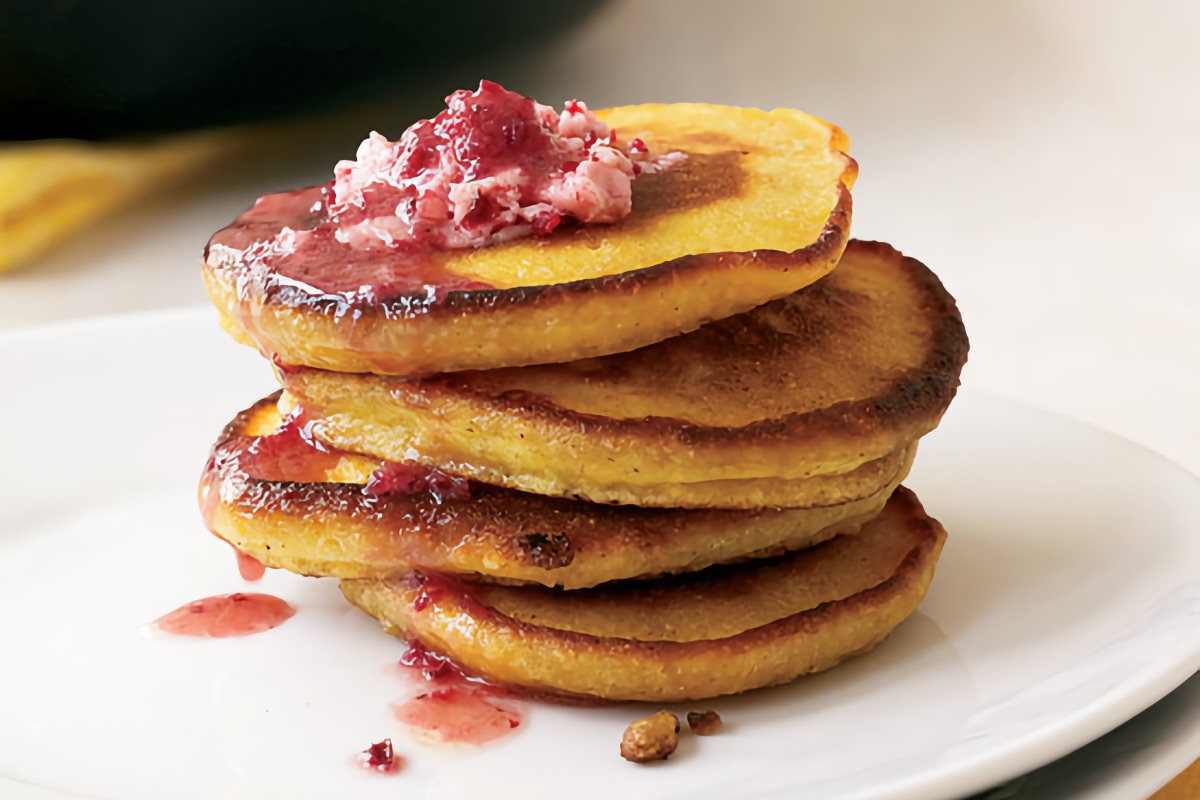Layers of delicate flavors from lemon, honey, and extra-virgin olive oil—which helps keep the cake moist and imparts mild fruitiness—come together in this one-bowl batter.
Pulling off a delicious homemade cake is always rewarding. Even better? When there's minimal cleanup afterwards. Enter our recipe for lemon cake with cream cheese frosting, which starred in our January issue along with plenty of other comforting dishes. Developed by our senior food editor Mary-Frances Heck, the incredibly simple cake has two layers, but only requires one pan for baking—plus, it's a one-bowl batter, too. Combined with the fact that we're still in citrus season, it's the perfect cake to make your next weekend baking project, whether it's for a special occasion or a bright, sunny snack to enjoy throughout the week.
To make the cake at home, read on for some of Heck's key tips, and grab the recipe below.
Make Sure to Meld the Lemon Zest and Sugar
Every single aspect of this cake is packed with lemon flavor, thanks to three components—lemon zest in the cake itself; a honey-lemon juice syrup that gets drizzled over the cake after it's been baked; and finally, a lemon zest- and juice-spiked cream cheese frosting to top it all off. In the first step, you combine the granulated sugar and lemon zest in a bowl for the batter and rub the mixture with your fingers, releasing the essential oils from the zest to give the sugar a lemony flavor.
"Remember that the zest is going to give you lemon aroma, and the juice is going to give you tart lemon flavors," Heck says. "So you always want to have both of those present when you're making something really lemon-flavored."
You Don't Need to Cream the Butter and Sugar—Because There's No Butter in the Batter
Countless baking recipes involve creaming together butter and sugar, from chocolate chip cookies to birthday cake. However, this cake calls for extra-virgin olive oil instead of butter in the batter, meaning that you just need to stir everything together in one bowl (hence, a one-bowl batter!) instead of mixing the dry and wet ingredients separately and then combining them.
Don't Over-Whisk
As you incorporate the flour and baking powder into the batter, take care not to over-whisk. Otherwise, you'll start developing gluten, which would result in a tough cake. Ultimately, the batter should be uniformly combined and smooth, which should take roughly 20 turns of the whisk, give or take.
Experiment With Other Citrus
This recipe is specifically tailored to the tartness of lemon juice. You can certainly try other citrus if you'd like, and turn this into a grapefruit cake or orange cake. If you do, Heck says to "season to taste, so to speak," and adjust the sugar accordingly.
Switch Up the Honey and Olive Oil, Too
You can also play around with the olive oil and honey used in the recipe to tweak the flavor of the cake. If you're serving the cake solely to adults, Heck recommends a "really flavorful" olive oil and a wildflower honey with a "really beautiful, strong honey flavor;" if you're serving the cake to kids, on the other hand, stick with a "lighter-flavored olive oil" and "mild-flavored honey."
One-Pan Wonder
One of the (many) beautiful things about this cake is that you only need one 9x13-inch pan to bake it (thanks to a trick we'll get to in a minute). If you want to do two eight-inch rounds instead, you can, Heck says—but since sticking with the 9x13 means only having to wash one pan, we're all for it. (A quarter sheet pan works too.) You can also opt to not cut the cake in half and stack it, instead leaving it in one layer like a snack cake and just frosting the top.
Use Softened Cream Cheese and Butter
When you're making the cream cheese frosting, use butter and cream cheese that are softened so that they're "soft and spreadable." Using cream cheese that's not fully softened would create lumps when you mix—and you want that frosting to be fluffy and smooth.
Refrigerate Before Cutting and Stacking
In step three, after frosting the top of the cake, the recipe instructs you to refrigerate it uncovered for about 15 minutes, until the frosting hardens. Don't skip this step, Heck says—the frosting will be very soft right after you make it, so you want to ensure it firms up. After that, you can cut the cake in half crosswise, stack the halves, and finish covering the exterior with frosting.
Keep the Cake Chilled
This cake not only tastes good chilled, but keeping it cold also helps ensure that the frosting will stay set up and won't soften. If you're going to be serving the cake in a warm environment, Heck recommends leaving it in the fridge until you're ready to slice and serve.
Grab a Drink
If you'd like to pair drinks with the cake, try something like Prosecco—Heck recommends "a bubbly that has a little, little bit of residual sugar." She also suggests sipping a shot of espresso as you're finishing up your slice of cake, or, if you're enjoying the cake at tea time, an Earl Grey or another "citrusy infused black tea." No matter what you choose, you'll savor every bite.
This article was from Food & Wine and was legally licensed through the Industry Dive publisher network. Please direct all licensing questions to legal@industrydive.com.








